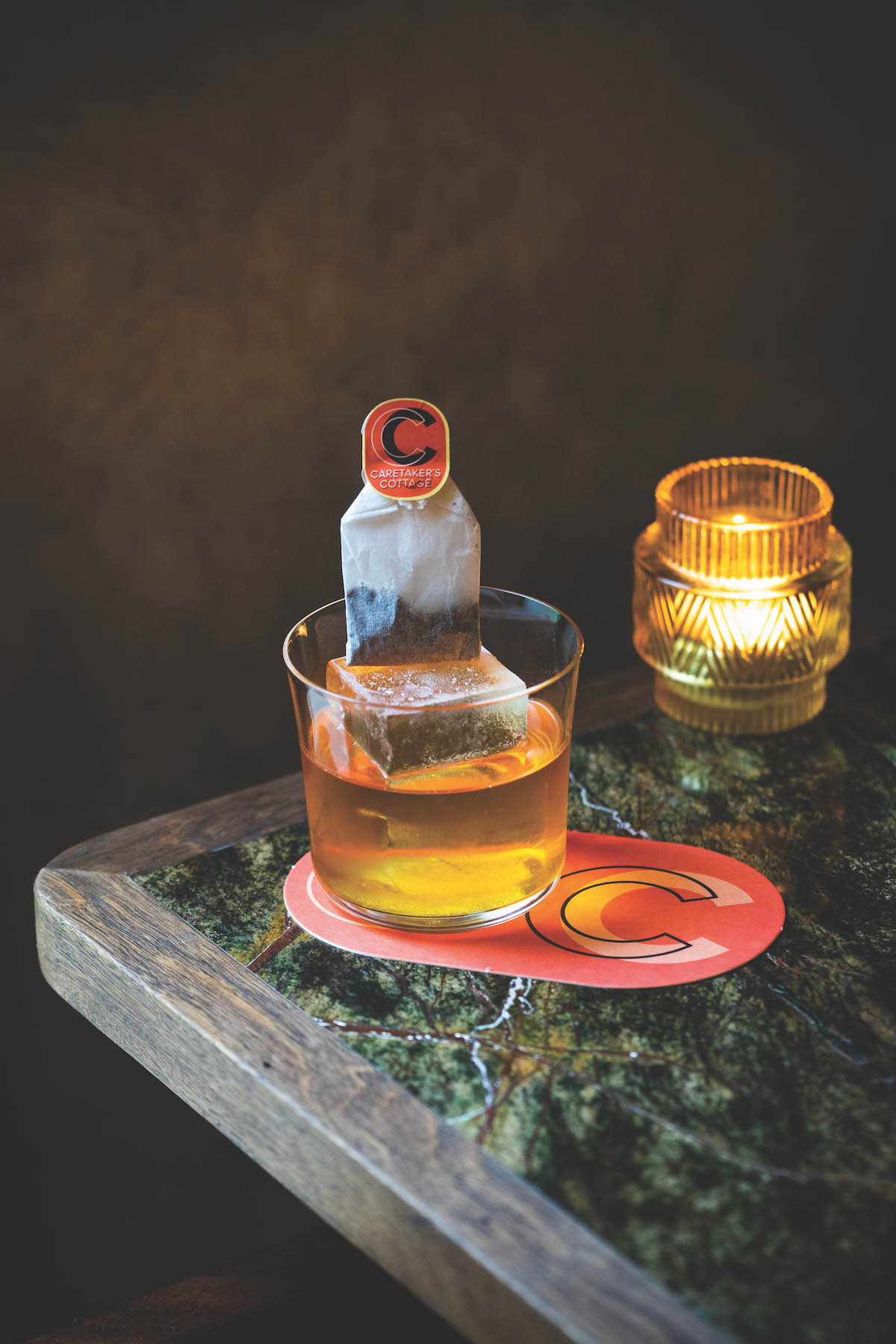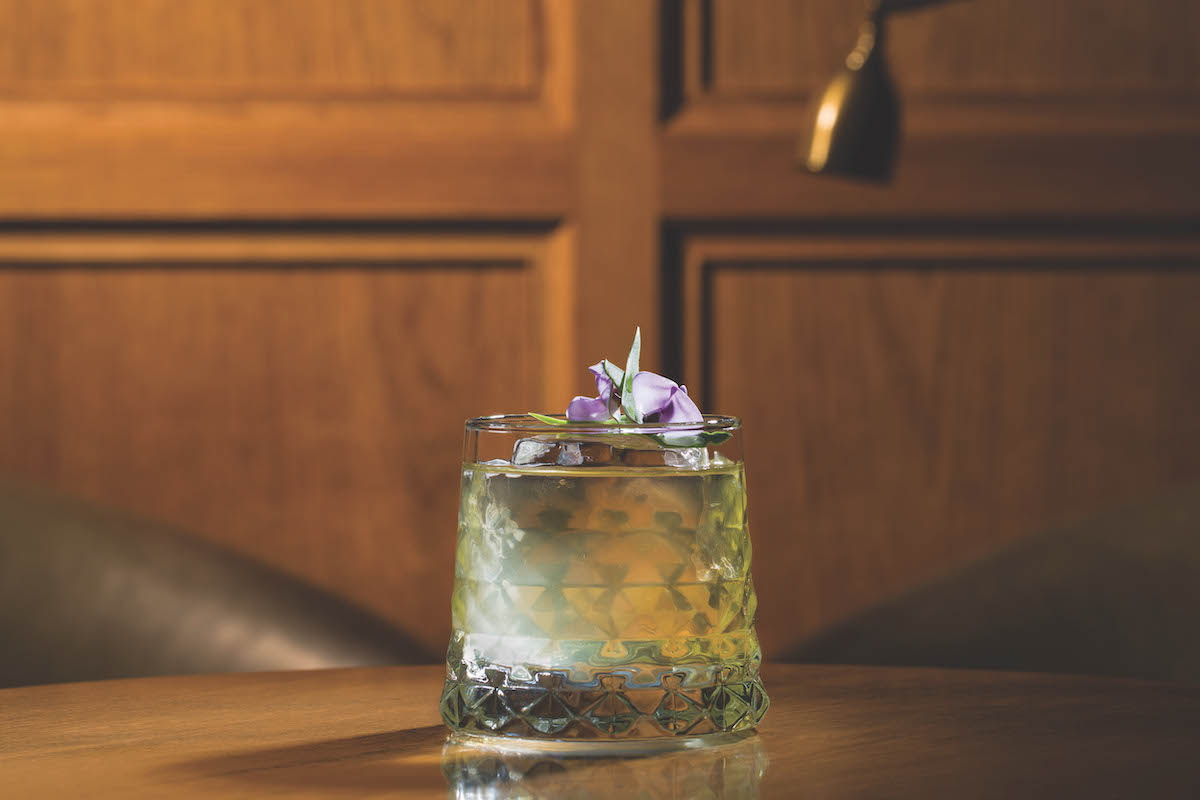For most, the thought of adding booze to milk might recall the strange mid-20th-century libation known as the White Russian and its semi-ironic late ’90s revival thanks to the cult Coen Brothers movie “The Big Lebowski”. But dairy-based cocktails in the form of clarified milk punches are a centuries-old tradition and have, in recent years, undergone a renaissance. Featuring everything from Froot Loops-infused milk to curry leaves, they have become a fixture of high-end cocktail lists around the world.
Clarified milk punch involves curdling milk with spirits and/or citrus juice, which turns it into a clumpy, disgusting mess. But when the mixture is strained and the milk solids removed, what’s left behind is a richly textured and delicious clear liquid. Light, silky and with a delightful complexity, these old-yet-new-again creations taste far better than they sound and offer a drinking experience unlike any other.
“The textures you can achieve with a milk-washed and clarified cocktail are incredible,” says Jenna Hemsworth, a Sydney-based bartender and consultant. “They’re also a treat for guests who haven’t experienced them before, because the discrepancy between how the liquid looks and tastes is so striking.” Hemsworth is referring to the fact that milk punches end up almost completely clear once the liquid has been properly strained off but retain a smooth texture, along with the balancing tartness of the citrus and the undiminished taste of the other ingredients. The resulting drinks are both visually engaging and surprisingly full-flavoured.
According to the cocktail historian David Wondrich, the earliest extant recipe for milk punch comes from a tattered manuscript by a housewife named Mary Rockett, dated 1711. Mrs Rockett’s version involves the rind and juice of eight lemons, a gallon (almost four litres) of brandy, two pounds of loaf sugar, grated nutmeg and two quarts of milk, curdled and strained. It’s enough to make a dozen 750-millilitre bottles, which will keep almost indefinitely due to the preservative powers of citrus, sugar and alcohol.

In the 17th and 18th centuries, before the rise of the personal, single-serve cocktail, the preferred way to ingest spirits in company was punch. Fabulous concoctions of brandy and rum were mixed by the gallon with citrus, tea, cane sugar and spices, all of which were exotic and exciting ingredients at the time. Mixed in large, ornate bowls and served with matching cups, punch was enjoyed as a group throughout an evening of merrymaking.
Countless recipes survive for these party-starting mixes, and every upscale tavern keeper, gentleman of means and proud hostess in the English-speaking world had their own version to wow their guests. These were the precursors to modern mixology and with them began the inspired naming of spirits-based drinks, lavish garnishes and theatrical preparation rituals; it was the birth of drinks as art. Throughout, clarified milk punch was a staple version of the colonial era’s trendiest drink.
By the middle of the 19th century, complex and time-consuming punches had fallen out of fashion, replaced by much simpler single-serve cocktails of the kind still enjoyed today. But recently, like so many of the laborious cookery techniques of the pre-industrial era, from craft beer to pickling to artisanal cheese, milk punch is making a comeback thanks to industrious modern gourmands.
For those who want to experience the drink in a most luxurious setting, there’s the Punch Room at London’s Edition hotel, considered a world leader in modern interpretations of historical punch recipes. Decked out in dark brown leather, wood panelling and teal tufted velvet, the venue serves 30 different punches. Its signature milk punch includes pineapple, spices, Ceylon arrack (a Sri Lankan spirit made from the fermented sap of coconut flowers), Somerset cider brandy, Cognac, rum, oolong tea and full-fat milk. An early mover in the milk punch revival, the Punch Room has inspired a generation of bar professionals.

After its initial popularity in Mrs Rockett’s time, milk punch had a good run for well over 100 years and was even bottled and sold commercially by various companies. Queen Victoria was so enamoured with the version produced by Nathaniel Whisson & Co that she named them “Purveyors of Milk Punch to Her Majesty”. The Melbourne-based cocktail bottler Loro is reviving this sort of classic recipe, teaming up with Mörk Chocolate to produce Cinnamon Bun Milk Punch with local rye whisky and orange liqueur. Loro’s innovative take turns a chunky slop of milk-soaked cinnamon buns into a high-class cocktail fit for a queen.
At Firebird in Prahran, Melbourne, milk punch gets an exotic twist with an infusion of coconut, Thai lime leaves and curry leaves. In Brisbane, at Savile Row, where the current drinks list is inspired by fabrics traditionally used by tailors on the London street from which the venue takes its name, bartenders serve a blend called Cashmere. Made with gin, macadamia liqueur, grappa, honey, apple juice and lemon, it’s designed to emulate the texture of that cloud-soft wool.
“Pure cashmere is silky and feathery-light — a fabric of comfort and elegance,” says the senior bartender Andie Bulley. “Milk punch translates that amazing feeling to our palates. Using the soothing and familiar flavours of an apple martini, this drink also leans into the feeling of comfort we associate with cashmere.”
Vegans, do not lose heart. Should one want to try one of these elixirs without the animal product, Melbourne’s The Cloakroom Bar has a punch made with the milk of coconuts rather than cows. Gabrielle’s Punch, the work of the manager James Armstrong, includes a strawberry-infused blend of rums, as well as melon liqueur, strawberry and mint syrup, berry tea and a solution of acids designed to emulate the flavour of Champagne, all clarified with coconut milk. “I developed the drink to make milk punch available to people who are lactose intolerant or vegan,” Armstrong says. “The taste reminds me of strawberry Starburst with a toasted coconut element, but everyone who tries the drink finds a different flavour of something nostalgic to them, which I love.”
Nostalgic or new, the milk punch is here to stay, yet another old-time tipple made fresh by ever-expanding palates and crafty bar managers.




 Milk punch gets the floral treatment at the Punch Room at London’s Edition hotel. Photography courtesy of the Punch Room at Edition Hotel.
Milk punch gets the floral treatment at the Punch Room at London’s Edition hotel. Photography courtesy of the Punch Room at Edition Hotel.